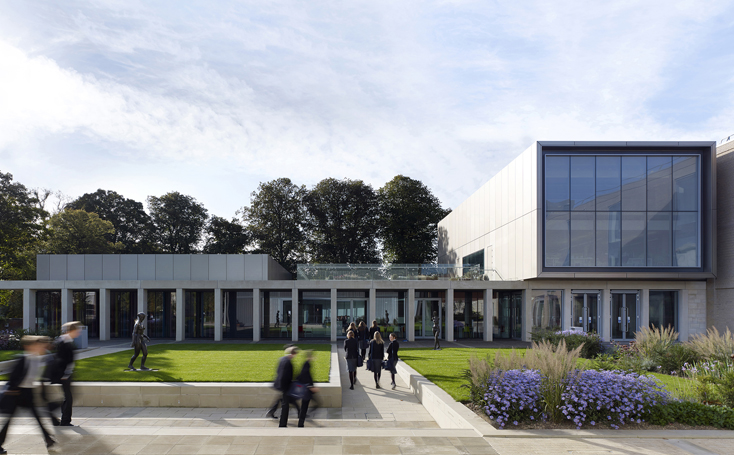Employee Ownership Trusts (EOTs) are four years old this month, during which time they have become the ownership-transfer vehicle of choice for a growing number of architecture practices.
Asked to name an employee-owned business, most people would point to John Lewis, or, in construction, possibly the Arup Group, two examples of businesses built from their earliest days on the principle of employee ownership.
But when the EOT model arrived in May 2014 it offered a relatively easy to navigate – and tax efficient – way of transferring the ownership of an established people-based business while fostering the shared enterprise culture that many architects are keen to work within.
‘Company owners tend to look at EOTs because it is difficult to sell their company, or because they do not want to sell to someone else, or, more positively, because the form is very appropriate to collaborative working in businesses like architects’ practices,’ says Robert Postlethwaite, managing director of (employee-owned) law firm Postlethwaite, which specialises in employee ownership.

A first port of call for information on how employee ownership works could be the Employee Ownership Association, which lists several well-known names among its members, including Architype, Bennetts Associates, Donald Insall Associates and Cullinan Studio.
The EOT is only one route to employee ownership, but has become the most popular due to its relative simplicity, both to set up and manage in the longer term, Postlethwaite explains. So how does an EOT work?
The EOT purchases shares in the business following an independent valuation and holds them collectively on behalf of all employees. The minimum required share of the total is 51%. One of the attractions for owners is that this model can realise a reasonable estimation of the business value.
The money to buy the shares comes from the original company itself. Any profits made flow to the EOT as the new owner and are then used to acquire shares. Although the EOT itself can be set up quite quickly, payment for the shares is staggered over an extended period. A typical payment schedule to outgoing owners might be three to five years.
Meanwhile, the company will continue to be run by the directors and senior managers as before, although management does become accountable to the EOT as the new owner. The EOT itself is run by trustees, typically one or more nominated employees, an independent trustee and one of the former owners.
A major incentive for outgoing owners is that all payments from the EOT for their shares are exempt from capital gains tax. Indirect ownership of shares by employees means that shares do not have to be bought back from people leaving the company, they simply say goodbye to the benefits of ownership.
One of the principles of EOTs is that the business is run for the benefit of employees, who become eligible for tax-free bonuses, among other advantages, once the trust has met its obligations to the outgoing owners.
All shareholders are not equal, however, as there is flexibility to pay bonuses or assign more shares, if personal share ownership is also a feature, to employees based on hours worked, length of service and, crucially, salary. So senior and key staff members can be recognised through larger bonuses or shareholdings.
The standard EOT model is not the whole employee-ownership story. There are tax-advantaged schemes for direct employee share ownership and investment, and some companies reward key staff with Enterprise Management Incentives (EMIs), which grant an employee the right to acquire shares at an agreed price at a future date.
Time scales for setting up EOTs can be very short, but Postlethwaite suggests that a realistic minimum is two to three months. He recommends getting a specialist adviser with experience of employee ownership schemes – many accountants will do the financial side of arrangements, but there are fewer advisers specialising in the legal documentation side.
Earlier this year Postlethwaite advised Orms on setting up their EOT, which became the practice’s majority share owner in March.
Director Oliver Richards says it’s early days, but the move has generated a lot of positive goodwill within the practice and a feeling that the intellectual responsibility for projects is spread more widely.
‘Employee ownership has to be culturally aligned with the way a practice already operates. We did investigate for a year or so and thought it would be in line with our own ethos and would be the natural way for us to move forward. I’d say it is well worth investigating for a certain type of practice,’ says Richards.
Thanks to Robert Postlethwaite, Managing Director, Postlethwaite; Oliver Richards, Director, Orms.
Text by Neal Morris. This is a Professional Feature edited by the RIBA Practice team. Send us your feedback and ideas
RIBA Core Curriculum Topic: Business, clients and services
As part of the flexible RIBA CPD programme, Professional Features count as microlearning. See further information on the updated RIBA CPD Core Curriculum and on fulfilling your CPD requirements as an RIBA Chartered Member.
Posted on 3 May 2018.









